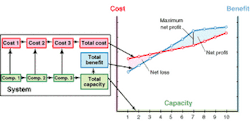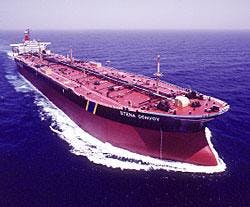Joint industry project to optimize vessel lifetime costs
Glisco Optekon is coordinating a joint industry project (JIP) focused on the lifetime optimization of vessel cost through inspection, testing, and moni-toring. The marine JIP is examining new approaches to the surface protection of ships using paints and anti-corrosion and anti-fouling compounds. It is also building a software model that allows vessel owners to predict and test multiple combinations of vessel type and onboard subsystems to meet a business opportunity.
Vinnova, the government Council for Swedish Innovation, is providing half the money for the JIP, while the remainder is funded by:
- Swedish shipowners: Stena, Wallenius, B & N, and Broström
- Paint manufacturers: International Paint, Hempel, and Jotun.
Organizations conducting research for the JIP include:
- Gothenburg University - studying microbiological organisms, their properties, sensitivities to other types of poisons, and produc-tion of corrosive substances
- SSPA Sweden - studying anti-fouling effectiveness
- Swedish Corrosion Institute - conducting corrosion testing and monitoring
- Chalmers University of Tech-nology - studying paint properties and surface chemistry, and quality function design principles, including life cycle cost.
One goal of the JIP is to apply an Optekon software tool, which uses probability distributions for the planning of different vessel maintenance actions. This includes cost-benefit and sensitivity analysis. The software is based on an optimization code, accessed via an Excel spreadsheet interface, to address the differing effects that different protection systems have on the economic viability of a newbuild or refurbishment project. The goal is to limit corrosion of the vessel and provide effective anti-fouling systems to maximize vessel life.
Prolonged exposure of equipment to seawater is a constant challenge for all ocean operations. Corrosion is the major issue, but fouling by algae, grasses, and other sea life is another expensive problem for hulls and stationary marine equipment.
In the past, coating compounds containing a high copper content were the preferred approach to corrosion control and antifouling. These coatings have the side effect of poisoning marine life, which brought them under close scrutiny by environmental advocates.
Future ban on copper
Tin compounds (TBT) have been replacing copper-based materials, but recently a move back to copper has occurred. Under the new International Maritime Organization rules, vessel operators have to phase out TBT between 2003 and 2008. New materials are required to meet the economic needs of the ocean industries, while achieving the broader goal of environmental neutrality.
Maintenance can be a significant part of the lifetime costs of an ocean vessel. Painting the exterior of a double-skin very large crude carrier can cost up to $1 million, while painting interior ballast tanks can cost up to $10 million. Depending on the exposure to seawater on the vessel's exterior or corrosive chemicals in the interior of cargo tanks, a vessel may require several different types of paint.
The lifetime effectiveness of any coating is one key to the efficient lifecycle operating cost of large vessels. Most paint companies will only provide a warranty for marine coatings for two to five years, so the timing of repainting and the cost and effectiveness of the anti-corrosion and anti-fouling elements in the paint are critical to minimizing the lifetime cost of any working vessel.
Anti-fouling compounds also affect the surface smoothness/ roughness of a hull and thus the fuel efficiency of the vessel. Both high and low speed vessels are being examined to determine the effect of hull roughness on fuel efficiency. High-speed vessels usually have little need for anti-fouling paints and, if fast enough, can use silicon or Teflon-based paints for more efficient operation. Low speed vessels are subject to fouling by seaweed and marine organisms, so anti-fouling compounds are needed.
The software allows the operator to model the capex and opex costs to build and maintain a vessel depending on its intended use. Capex plus opex costs and dayrate income are variable inputs that together produce a series of curves describing the cost vs. benefit spread for any particular offshore vessel. By monitoring and modeling multiple vessels, Glisco Optekon is helping create a more efficient and economically effective vessel fleet for the future.
For more information contact Nils Martensson, Glisco Optekon. Tel: +46 31 711 61 80, fax: +46 31 708 79 00, email: [email protected].
null
null


